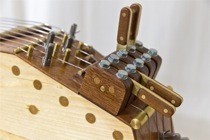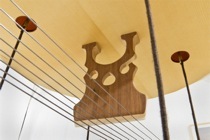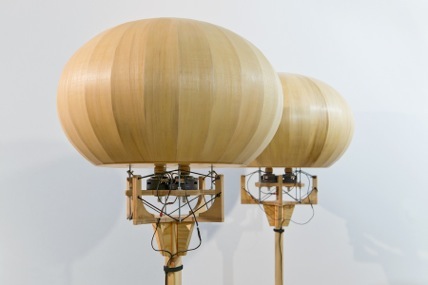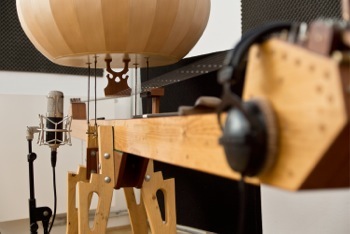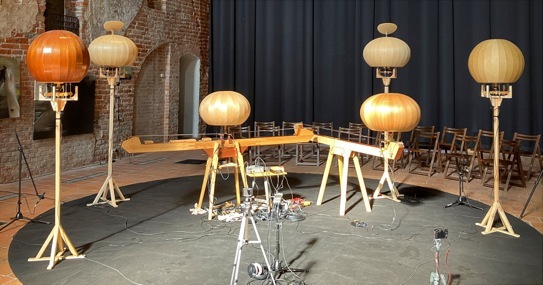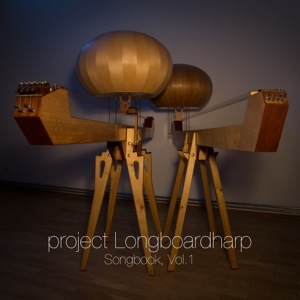project Longboardharp
Performance in the frame of the exhibition „C“ in Galeria EL, Elblag PL 2025
More videos on my YouTube channel
project Longboardharp

The latest instrument (Longboardharp No. 5) features precision-tuners on all of its strings and semitone-levers on four strings, increasing its musical versitility .
The strings are played with mallets, bows or by plucking (with fingers or plectrum). Melodies are played using a slide.
For live performances, the instrument can be equipped with electromagnetic pickups for the use of live loops and effects.
The Longboardharp does not adhere to any established musical or cultural tradition, allowing it to be used freely across musical genres.
The Longboardharp is an acoustic string instrument
It features eight steel strings stretched across a solid wooden beam, carrying a wooden resonator.
The resonator can be mounted in different positions, which significantly alters the instrument’s sound. Mounted at the center, the bridge devides the strings into two equally sounding segments, one of which acts as resonance-strings, enriching the overall tone. With the resonator being positioned at the end of the strings, the full string length is free to vibrate, resulting in a bass-heavy sound.
The instrument is typically tuned to a musical scale above F-sharp (alternatively F or G).
Recording
During an artist residency at Stadt:Atelier (Künstlerhaus) Salzburg, recordings were made with two Longboardharps.
Over the course of four weeks, 25 pieces of music were created, each consisting of three to seven fully recorded individual tracks (no loops or samples).
Recordings were done with a large-diaphragm microphone (t.bone SC 1100) and a digital audio recorder (Zoom H4N).
Post-production (in Logic Pro 8) focussed on preserving the natural sound of the instruments. To avoid altering its tonal character, no effects were used other than equalization and dynamic control.
Compressors and limiters were applied carefully during mastering. No artificial reverb was added.
Composition, performance, recording, mixing, and mastering by Florian Tuercke
Songbook Vol. 1 is a warm and earthy album, blending elements of world music, blues, jazz, and a touch of neo-classical influences.
Its use of odd time signatures and unexpected structures introduces a subtle complexity, while its melancholic yet comforting mood invites attentive, immersive listening.
RELEASE: 28 November 2025
Available on most Streaming Platforms
Sound System
In live performances, the Longboardharp is played through a sound system of custom built wood-membrane speakers. The Ghosts.
Beyond the conceptual idea of avoiding conventional loudspeakers in the stage setup, this approach is primarily driven by acoustic considerations. To avoid feedback issues when using live-loops and effects, the string sounds are captured with electromagnetic pickups. However, pickups produce a relatively dry sound compared to the rich tone a wooden resonator. The Ghosts are retired Longboardharp resonators with electro-mechanical exciters mounted to their soundboards. They re-introduce the timbre of wood into the sound.
Each Ghost has a volume output comparable to a medium-sized guitar amplifier – sufficient for chamber music settings in large rooms or small halls. (In larger venues or stage concerts, the Ghosts can be miked and amplified through the main PA system.)
When beats are used in live performances, they are also reproduced by Ghosts. The beats are specially tailored to the natural resonant frequencies of the individual Ghost, enhancing their physical and acoustic presence in the performance.
Live Performance
Songbook, Vol,1 – preview



